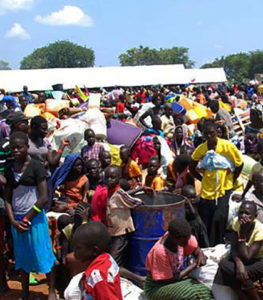War, poverty driving global migration – ILO report
Increasing numbers of conflicts and rising poverty have fueled a 20 per cent increase in the number of international migrants over the past four years, according to a major report from the United Nations.
According to the UN’s International Labor Organisation (ILO) the total number of people who left their home country in search of work, to join family, or to flee conflicts and persecution increased to 277 million last year from 232 million in 2013.
The most comprehensive attempt to show the scale of global migration ever undertaken, the ‘ILO Global Estimates on International Migrant Workers’ report says rising levels of inequality in many parts of the world were having a significant impact.
It said governments adopting populist policies would not address the problem.
The report says that migration was becoming a “defining feature” of the modern world and that the issues it posed could not be solved by individual nations acting alone.
The report comes as support rises for populist and nationalist parties in several major economies around the world, fueled by anti-migrant sentiment and the austerity from weak wage growth after the global financial crisis.
ILO spokesperson Manuela Tomei said that scapegoating migrants and imposing tougher border controls was not the answer to solving the socioeconomic and political pressures posed by rising levels of migration.
“If you’re saying there are hordes of migrants that are invading us, and the numbers are unrelated to reality, this may trigger a syndrome of anxiety and insecurity and the response would be ‘let’s keep them out’,” she said in a statement.
Part of the increase in international migration is due to a rising world population, which is predicted to reach 8 billion in 2023.
But the ILO report said that the impact from rising inequality and a growing number of conflicts around the world, such as the war in Syria, as well as droughts and other environmental issues were also major causes.
Of the 277 million, 19 million are refugees, 234 million are over the age of 15, and 164 million are workers, according to the ILO estimates, with a particular rise for people moving to improve their economic situation.
The report said migrant workers were found to overwhelmingly move to wealthier nations, with three-fifths of all migrants concentrated in three regions: North America (23 per cent), south and west Europe (24 per cent) and the Arab states (14 per cent).
Arab countries had the largest percentage of migrant workers as a proportion of their overall workforce and had seen big increases in arrivals in recent years as more workers moved to work in major cities like Dubai, Riyadh and Doha, which are experiencing building booms.
Across nine out of 11 regions analysed by the ILO, the percentage of migrants in work was higher than that of the local population, showing that when people move abroad they tend to do so for work, rather than other reasons.
Migration due to rising inequality comes after the World Bank estimated that almost half of the world’s population – 3.4 billion people – live on less than $US5.50 a day and struggle to meet basic needs.












